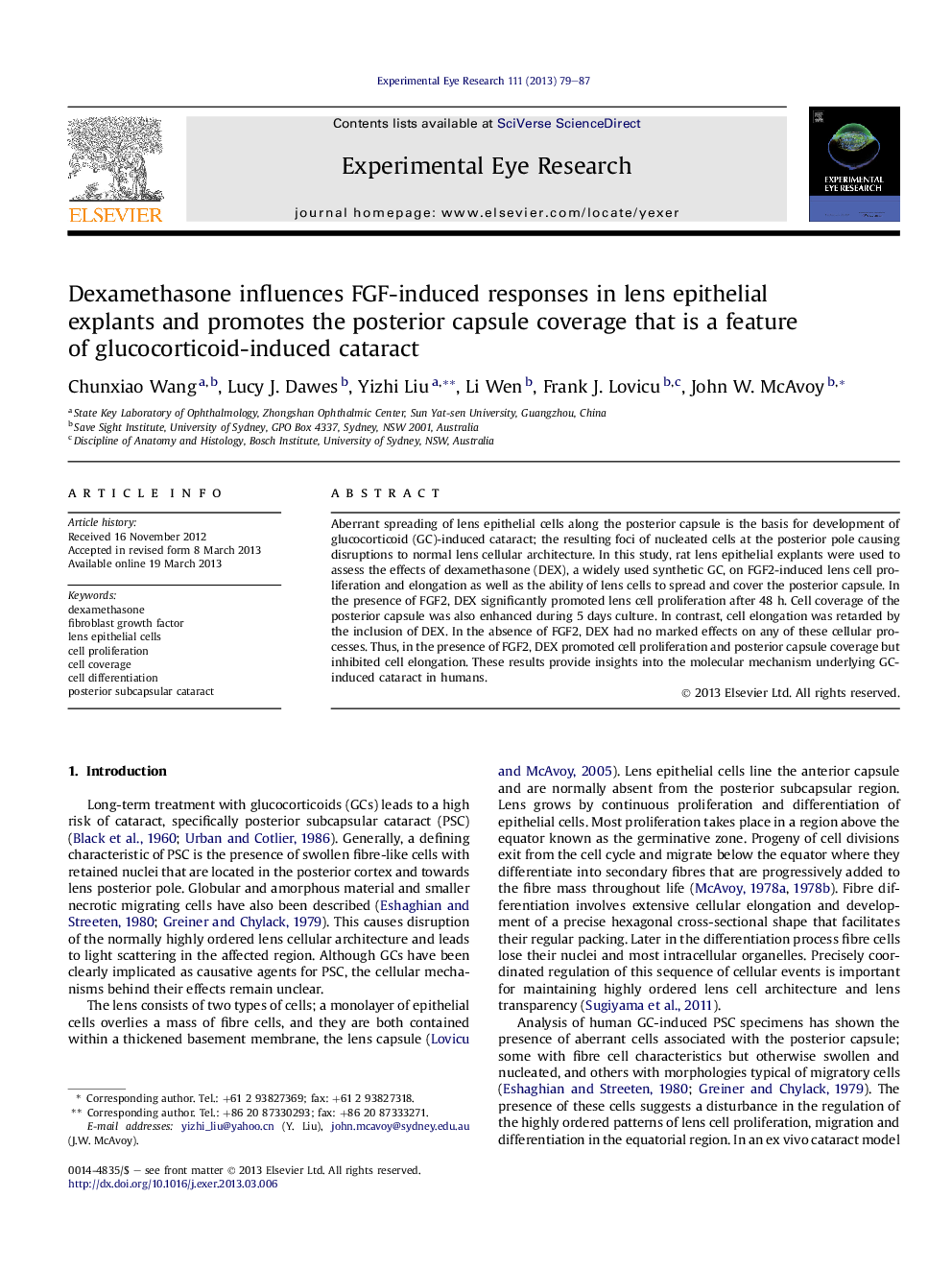| Article ID | Journal | Published Year | Pages | File Type |
|---|---|---|---|---|
| 6197299 | Experimental Eye Research | 2013 | 9 Pages |
â¢Aberrant lens cell behaviour is the basis for development of glucocorticoid (GC)-induced cataract.â¢Rat lens epithelial explants were used to assess the effects of dexamethasone (DEX) on FGF2-induced lens cell behaviour.â¢The results show DEX promotes cell proliferation and cell coverage but inhibits cell elongation in the presence of FGF2.â¢The results provide insights into the molecular mechanism underlying GC-induced cataract.
Aberrant spreading of lens epithelial cells along the posterior capsule is the basis for development of glucocorticoid (GC)-induced cataract; the resulting foci of nucleated cells at the posterior pole causing disruptions to normal lens cellular architecture. In this study, rat lens epithelial explants were used to assess the effects of dexamethasone (DEX), a widely used synthetic GC, on FGF2-induced lens cell proliferation and elongation as well as the ability of lens cells to spread and cover the posterior capsule. In the presence of FGF2, DEX significantly promoted lens cell proliferation after 48Â h. Cell coverage of the posterior capsule was also enhanced during 5 days culture. In contrast, cell elongation was retarded by the inclusion of DEX. In the absence of FGF2, DEX had no marked effects on any of these cellular processes. Thus, in the presence of FGF2, DEX promoted cell proliferation and posterior capsule coverage but inhibited cell elongation. These results provide insights into the molecular mechanism underlying GC-induced cataract in humans.
